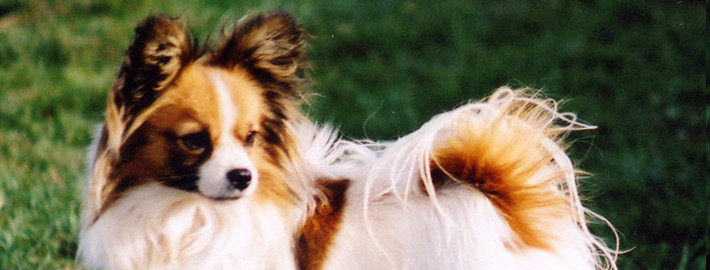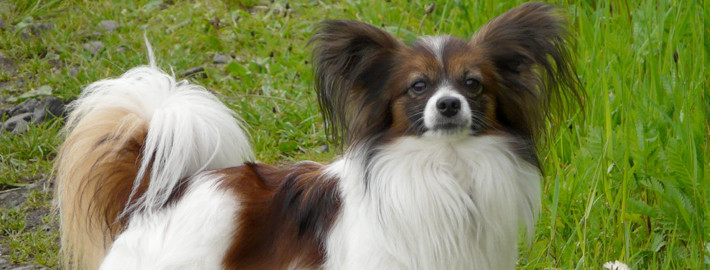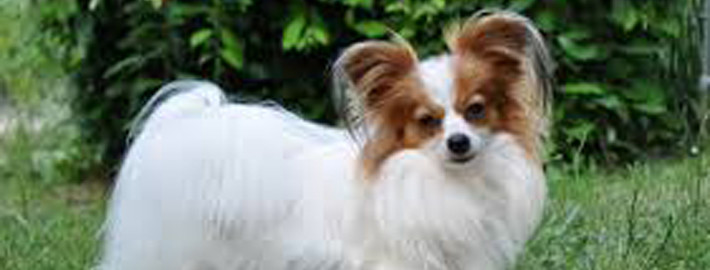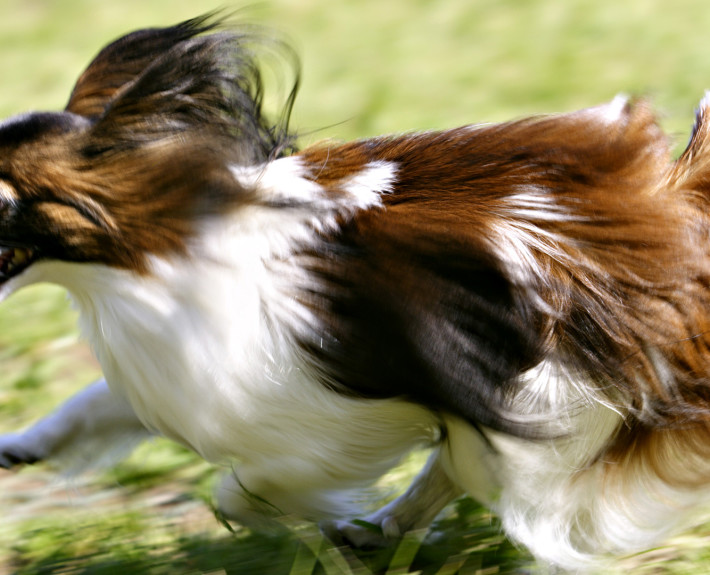What makes the Papillon Unique?
These diminutive dogs have been the pampered pets of the European aristocracy for centuries and it is easy to see why. This highly intelligent toy breed had been bred to be both a companion and pet for many hundreds of years, a role they continue to fulfill to this day.
Breed Groups
Page Contents
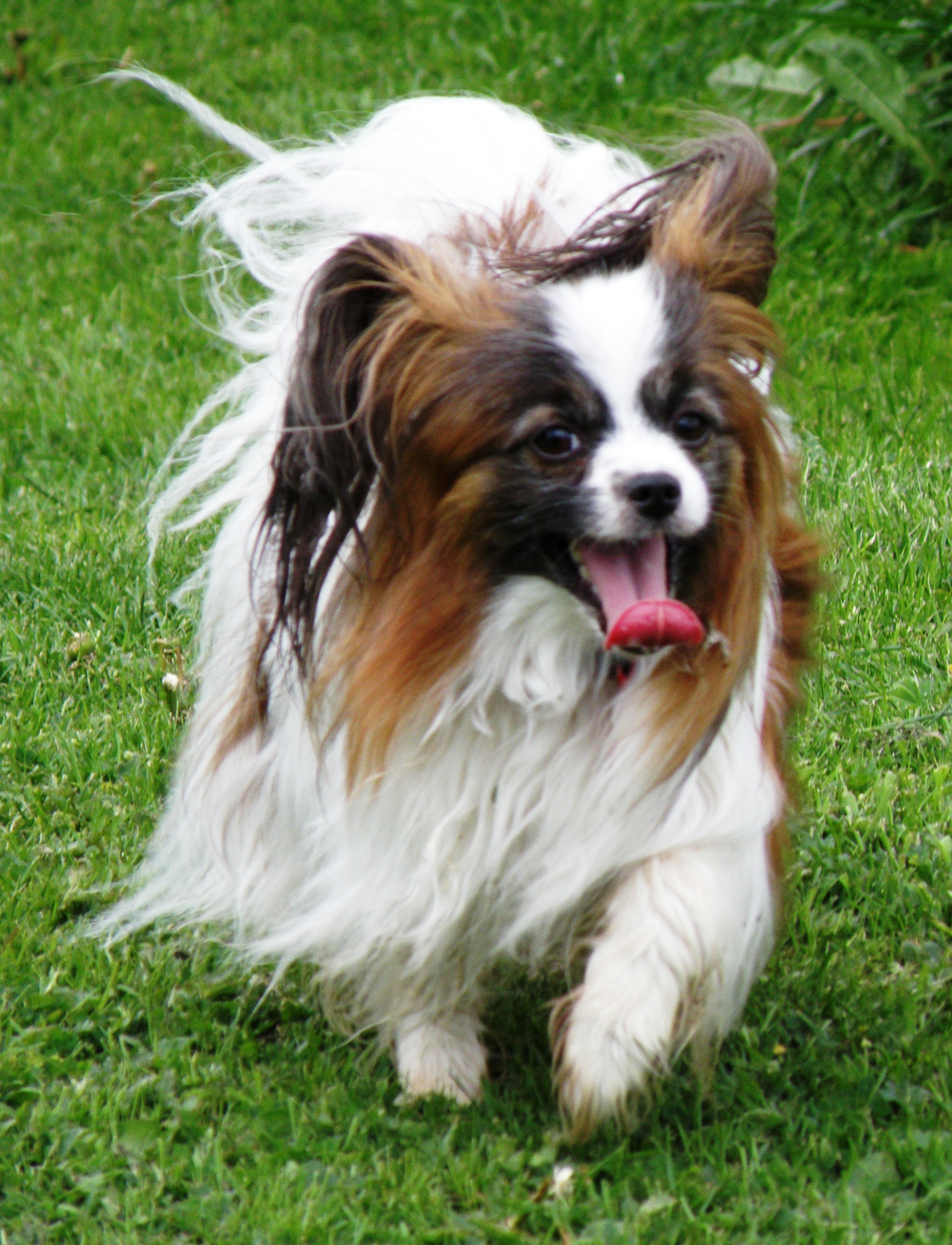
Is the Papillon Right For You?
Papillon is known for its responsiveness and obedience. These outgoing, jovial dogs rarely encounter a human being they don’t want to meet. Although some can be shy, this is considered to be a breed fault. In general, Papillons are friendly toward both children and strangers.
These dogs are intelligent and incredibly eager to please their owners, which alleviates some of the aggravation that often goes along with training pets. However, Papillons react particularly badly to harsh teaching techniques and require a gentle hand during the process. Owners should further note that if their pets do not get appropriate amounts of exercise they are far more likely to misbehave than their contemporaries.
In 5 Words
- Alert
- Happy
- Friendly
- Energetic
- Hardy
Characteristics
Learn About the Papillon
Description
General Description
Papillons are small dogs with long, silky coats. Their upright, fringed ears and symmetrical faces often put people in mind of a butterfly, but drop eared varieties are not uncommon. Their dark, round eyes should have an alert gaze that takes in everything that is going on around them. This breed is somewhat longer than they are tall and they move in a quick but graceful fashion. They have rounded heads and short muzzles as well as lengthy, fringed tails which are carried over their bodies.
Size
Dogs of both genders should stand between 8 and 11 inches (20 to 28 centimeters) at their withers or their shoulder blades. Female Papillons should ideally weigh between 7 and 9 pounds (3.2 and 4.1 kilograms). Males are only a few pounds larger, weighing in at around 8 to 10 pounds (3.6 to 4.5 kilograms). Any dog who is over 12 inches in height will be disqualified from the show ring, but this does not prevent them from being a wonderful pet.
Coat
These dogs have long, feathery coats that are predominantly white but generally include one or more additional hues. Bicolored varieties include white with lemon, black, red, sable, brown, fawn, or silver. Tricolored mixes usually have white and black as the predominant hues with red, brown, or tan as the third color. Papillons that are white, red, and sable are likewise allowed by breed standards. Solid color red,and sable are also permitted.
Short History of the Papillon
Dwarf Spaniels, the ancestors of modern day Papillons, were popular with the ruling classes as early as the Middle Ages. These dogs generally were the preferred pets for the nobility, aristocracy, and wealthy individuals of lesser rank. As a result, the breed’s history has been well documented by numerous paintings by a wide variety of artists.
There is some dispute about when the variety with upright ears made its first appearance but most sources agree that it existed by the 1800s. Although both dogs with upright and dropped ears can nowadays be born in the same litter, the earlier preference was for the latter type. To differentiate between the two subtypes, those with spaniel style ears were eventually given the identifying nickname “phalene” and those with upright ears became known as the“papillon” variety. These nicknames respectively are the words for “moth” and “butterfly” in French.
Papillons were officially granted American Kennel Club (AKC) recognition in 1915. Twenty years later, the Papillon Club of America was founded. This breed has been slow to catch on in England and the United States but continues to steadily grow in popularity.
Temperament
Out of the toy breeds, the Papillon is known for its responsiveness and obedience. These outgoing, jovial dogs rarely encounter a human being they don’t want to meet. Although some can be shy, this is considered to be a breed fault. In general, Papillons are friendly toward both children and strangers. They also tend to get along well with other dogs and pets that are living in their household. This breed is equally at home in the city as it is in the country. Due to their spaniel heritage, these dogs are fond of the outdoors but will happily play inside as well. Because of their small stature, this breed is ill suited for families that contain young children or very large dogs who may accidentally injure the Papillons while attempting to play with them. Poorly socialized members of this breed may get jealous of their owner’s other activities but for the most part Papillons are quite well adjusted.
Caring for Your Papillon
General Health
These dogs are born in small litters of between 2 and 4 puppies. In good health the Papillon has an average lifespan of about 12 years, but these dogs can sometimes live as long as 17 years. Nonetheless, there are some health concerns that owners should watch out for in this breed. Papillons are prone to suffering from dental problems, progressive retinal atrophy, and patellar luxation. Some members of this breed also will have a skull condition known as an open fontanel. Owners should also be aware that members of this breed can be extremely sensitive to anesthesia and discuss the matter with their vet prior to any operations that might require its use.
Care
Daily
These dogs have to be brushed every day to keep their fur free of mats and tangles. They also need some form of exercise on a daily basis as well, be it a short walk or playtime in a safely enclosed area.
Weekly
It is always recommended that owners brush their pet’s teeth a few times weekly to prevent both bad breath and periodontal disease. Due to the fact that tarter can quickly build up on a Papillon’s teeth, their owners will need to be more attentive to this aspect of their care than those with other breeds of dog.
Monthly
Most flea, tick, and heartworm prevention medications will need to be administered on a monthly basis to protect dogs from becoming ill or uncomfortable due to the presence of parasites.
Grooming & Bathing
Papillons can be bathed if their owners find it necessary to do so, but they are typically tidy, odor-free animals. However, this breed does benefit from having their toenails clipped every so often.
Exercise & Training
These dogs are intelligent and incredibly eager to please their owners, which alleviates some of the aggravation that often goes along with training pets. However, Papillons react particularly badly to harsh teaching techniques and require a gentle hand during the process. Owners should further note that if their pets do not get appropriate amounts of exercise they are far more likely to misbehave than their contemporaries.

